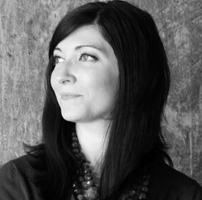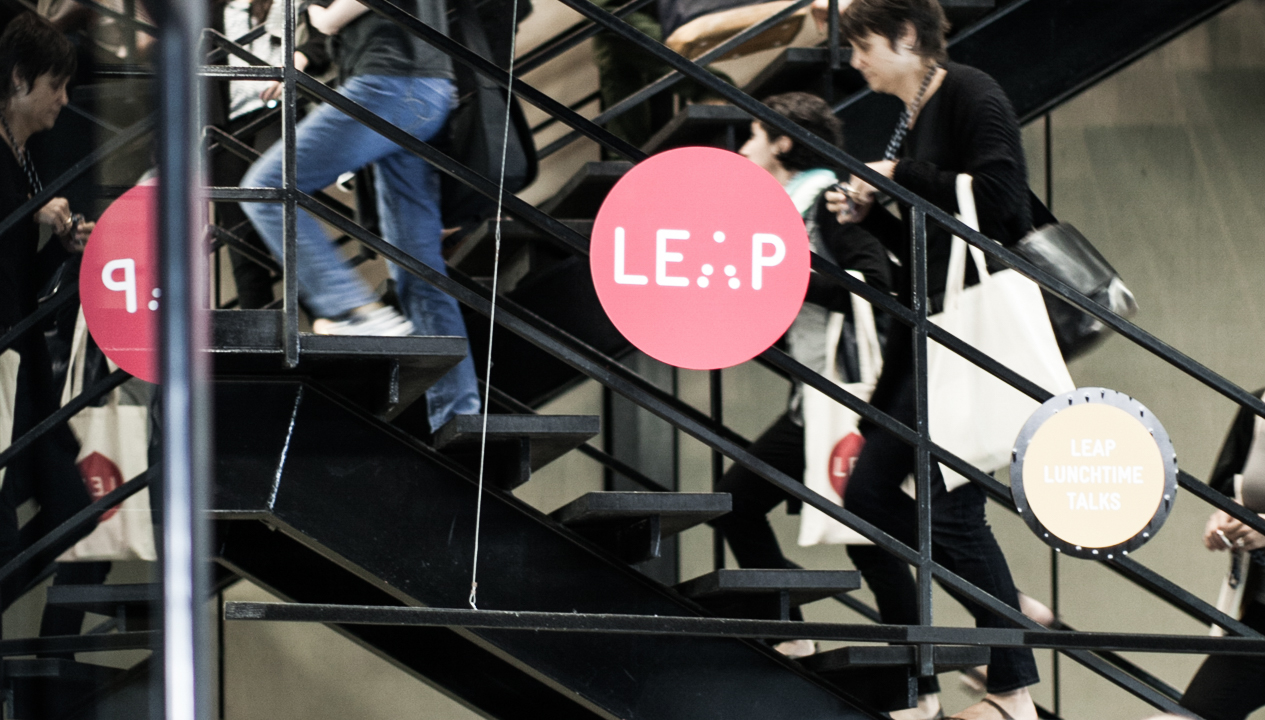In the following blog post, Designmatters Associate Director, Jennifer May reflects on the first LEAP Symposium one year later.

 One year ago, 150 educators, students, practitioners, and thought leaders from across sectors arrived here at Art Center in Pasadena for the LEAP Symposium. The first symposium of its kind, the goal of LEAP was to jumpstart a conversation about career pathways for designers in social innovation. As the Manager of the LEAP Symposium, I worked closely with Mariana Amatullo and the other members of the “Brain Trust,” along with the facilitation team, to plan the program over the summer and to execute the event over three exciting and energetic days. This was my first introduction to the world of design, and I was inspired and intrigued by the free flow of conversation, the openness, the endless ideas generated, and the prolific use of post-its to find the connections between these ideas. (Side note: when ordering supplies for LEAP, I ordered more post-its than I thought 150 people could ever use. At the end of the event, there were only a few sad sticky notes left).
One year ago, 150 educators, students, practitioners, and thought leaders from across sectors arrived here at Art Center in Pasadena for the LEAP Symposium. The first symposium of its kind, the goal of LEAP was to jumpstart a conversation about career pathways for designers in social innovation. As the Manager of the LEAP Symposium, I worked closely with Mariana Amatullo and the other members of the “Brain Trust,” along with the facilitation team, to plan the program over the summer and to execute the event over three exciting and energetic days. This was my first introduction to the world of design, and I was inspired and intrigued by the free flow of conversation, the openness, the endless ideas generated, and the prolific use of post-its to find the connections between these ideas. (Side note: when ordering supplies for LEAP, I ordered more post-its than I thought 150 people could ever use. At the end of the event, there were only a few sad sticky notes left).
 Although it was my first time working with designers, I was familiar with social innovation. I graduated from USC Marshall School of Business in May of 2013, as a Brittingham Social Enterprise Lab Graduate Fellow. I took on the temporary assignment of organizing LEAP because the topic of career pathways in social innovation was especially appealing to me, as I was trying to figure out my next career steps as a newly minted MBA focused in social impact. Throughout the planning process and the event I heard the Brain Trust, facilitators, and attendees touch on issues that I was interested, although not necessarily surprised, to find were the same issues I grappled with trying to forge a career path in an emergent field.
Although it was my first time working with designers, I was familiar with social innovation. I graduated from USC Marshall School of Business in May of 2013, as a Brittingham Social Enterprise Lab Graduate Fellow. I took on the temporary assignment of organizing LEAP because the topic of career pathways in social innovation was especially appealing to me, as I was trying to figure out my next career steps as a newly minted MBA focused in social impact. Throughout the planning process and the event I heard the Brain Trust, facilitators, and attendees touch on issues that I was interested, although not necessarily surprised, to find were the same issues I grappled with trying to forge a career path in an emergent field.
I chose to attend USC Marshall over other schools in large part because of the BSEL, one of the most prominent programs in business for social impact I could find. This year I began mentoring, through the Forte Foundation, a group of women applying for their MBAs. As I helped them look at schools, I noticed a difference between 2009, when I first began researching schools, and today- it appears that far more MBA programs have social impact programs, or, perhaps more likely, more schools are promoting their social impact courses, programs and organizations as a selling point for prospective students in recognition of the growing demand.
 There is also growth for programs for design for social impact, mostly at the graduate level. Here at Art Center, we have the great Media Design Practices: Field Track program. During LEAP, I was especially interested to hear educators discuss the skills designers might need to work in social innovation: Is it merely a matter of teaching them the typical design skills, and then teaching students how to apply those skills in specific contexts? Or does practicing as a social innovation designer require special skills that need to be addressed? One skill, or attribute, I heard mentioned over and over again was “empathy”- not necessarily a word I heard used a whole lot in business school, but a skill that is undoubtedly necessary to practice in situations where you are hoping to impact lives. I hope the simultaneous growth in design and business for social impact education programs will lead to new opportunities to dive into the intersection of business and design as applied to social impact, to strengthen curricula and the skill sets of all new graduates entering the field.
There is also growth for programs for design for social impact, mostly at the graduate level. Here at Art Center, we have the great Media Design Practices: Field Track program. During LEAP, I was especially interested to hear educators discuss the skills designers might need to work in social innovation: Is it merely a matter of teaching them the typical design skills, and then teaching students how to apply those skills in specific contexts? Or does practicing as a social innovation designer require special skills that need to be addressed? One skill, or attribute, I heard mentioned over and over again was “empathy”- not necessarily a word I heard used a whole lot in business school, but a skill that is undoubtedly necessary to practice in situations where you are hoping to impact lives. I hope the simultaneous growth in design and business for social impact education programs will lead to new opportunities to dive into the intersection of business and design as applied to social impact, to strengthen curricula and the skill sets of all new graduates entering the field.
 On the final day of LEAP, we held an “Innovation Fair,” where groups shared their ideas for advancing design careers in social innovation, including skill sets, tools, and models- you can check out all of the proposal boards here. After the Innovation Fair, LEAP attendees shared their actionable commitments for forging career pathways in social innovations. Commitments ranged from hosting a design intern or fellow, to mentoring design students, to promoting the space through articles and blogs. LEAP is on track to become a biennial event- LEAP 2.0 will be hosted by MICA in late 2015- and it will be really exciting to track these ideas and commitments throughout the next iterations of LEAP, to see which “what ifs” become reality.
On the final day of LEAP, we held an “Innovation Fair,” where groups shared their ideas for advancing design careers in social innovation, including skill sets, tools, and models- you can check out all of the proposal boards here. After the Innovation Fair, LEAP attendees shared their actionable commitments for forging career pathways in social innovations. Commitments ranged from hosting a design intern or fellow, to mentoring design students, to promoting the space through articles and blogs. LEAP is on track to become a biennial event- LEAP 2.0 will be hosted by MICA in late 2015- and it will be really exciting to track these ideas and commitments throughout the next iterations of LEAP, to see which “what ifs” become reality.
Last week I had coffee with my former career counselor at Marshall. She noted that students looking for a career in social impact have to be ready to hustle, even more than the typical graduate student: “You’re looking for a job in a market that hasn’t matured.” There is definitely no typical path to landing a job in social impact at this point- finding a position takes a lot of determination, and bit of luck. One year after my temporary LEAP gig, I am fortunate enough to be working full time for the Designmatters team in the newly created position of Associate Director. I am thrilled that in my new job, I get to work in my chosen field while helping provide design students with the educational experiences they need to build impactful careers.
The LEAP Symposium was made possible in part by the generous support of the National Endowment for the Arts and the Surdna Foundation, along with our other generous supporters who are inspired by the intersection of design and social innovation.
